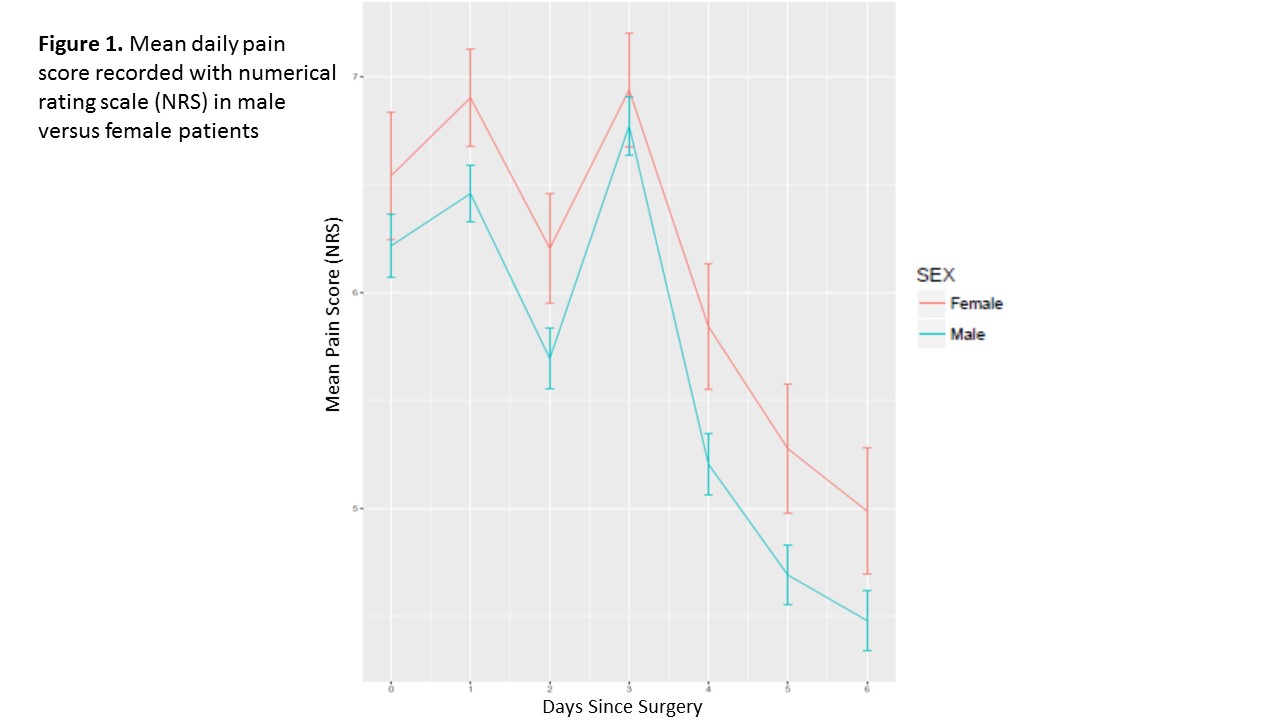NM-215
Sex Differences in Acute Postoperative Pain in Youth Undergoing Nuss Repair of Pectus Excavatum
Olbrecht V, Walter C, Ding L, Glynn S, Coghill R
Cincinnati Children's Hospital Medical Center, Cincinnati, OH, USA
Introduction
Sex is an important characteristic that influences pain. Multiple studies support that women, as compared to men, experience higher levels of both acute and chronic pain1. To date, few studies have addressed the sex differences of acute and chronic pain in children and adolescents. The pectus surgery population is an ideal study population as this deformity is one of the most common in the pediatric population and the Nuss repair is often associated with significant postoperative pain2. The goal of this study is to identify sex differences in the experience and treatment of pain in a pre- and post-pubescent population.
Methods
We conducted a retrospective review of all patients at Cincinnati Children's Hospital Medical Center who underwent Nuss repair of pectus excavatum from January 1, 2009 until September 15, 2016. Patients were excluded if they had a previous history of Ravitch or Nuss repair of pectus excavatum. Pain ratings were extracted from the patients' medical records. Ratings began with the patient’s arrival in the post-operative care unit (PACU) and extended until discharge from the hospital. The maximum pain rating for each day was extracted for each patient. An ANOVA was used to examine within subjects effects of time and between subjects the effects of sex. A separate ANOVA was also conducted to compare length of hospital stay in males versus females.
Results
A total of 414 patients were included in this preliminary analysis, 83 females and 331 males. Patients ranged in age from 8 to 27 years, with an average age of 15.6 + 3.1 years. The average Haller index of this patient population was 5.7 + 2.9. Preliminary analysis of these patients suggests that females experienced more pain postoperatively as compared to males when comparing maximum pain scores per day (main effect of sex: p<0.05). Although there was a significant effect of sex as well as a significant effect of time (p<0.05), there was no sex-time interaction (Figure 1). In addition, when comparing females to males, females stayed in the hospital slightly longer than males following surgery (4.8±0.1 vs. 4.4±0.04, p<0.05).
Conclusions
Little evidence exists addressing sex differences in postoperative pain in males versus females. This preliminary analysis suggests that sex differences in pain as well as length of stay exists in patients undergoing Nuss repair of pectus excavatum. Further study is necessary to address both effects of age and neuro/hormonal mechanisms supporting these differences. However, these differences indicate that females may require more aggressive or potentially different analgesic interventions than males in order to have more effective pain relief and more rapid return to function.
References
1. Keogh E et al. Pain 2006;123(3):275-84.
2. Densmore JC et al. J Pediatr Surg 2010;45(9):1767-71.
Top












